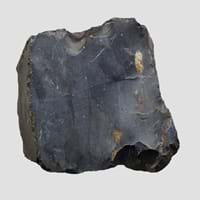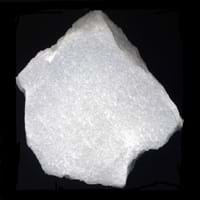Definition
Chert is a hard, dark, opaque sedimentary rock which is composed of silica with an amorphous fine-grained texture
Marble is a non-foliated metamorphic rock which is composed of recrystallized carbonate which is formed when limestone is exposed to high temperatures and pressures over a long time
Discoverer
Unknown
Unknown
Etymology
From flint-like quartz, 1670s, of unknown origin- a local term, which has been taken into geological use
From the Greek marmaros, shining stone and also from the English word marmoreal meaning marble-like
Class
Sedimentary Rocks
Metamorphic Rocks
Sub-Class
Durable Rock, Hard Rock
Durable Rock, Medium Hardness Rock
Group
Not Applicable
Not Applicable
Other Categories
Fine Grained Rock, Opaque Rock
Medium Grained Rock, Opaque Rock
Texture
Banded, Rough
Granular
Color
Black, Brown, Green, Grey, Red, White
Black, Blue, Brown, Grey, Pink, White
Durability
Durable
Durable
Scratch Resistant
Yes
Yes
Appearance
Glassy or Pearly
Veined and Shiny
Interior Uses
Decorative Aggregates, Homes
Bathrooms, Countertops, Decorative Aggregates, Entryways, Floor Tiles, Homes, Hotels, Interior Decoration, Kitchens, Stair Treads
Exterior Uses
As Building Stone, As Facing Stone, Garden Decoration, Office Buildings
As Building Stone, As Facing Stone, Garden Decoration, Office Buildings, Paving Stone
Other Architectural Uses
Curbing
Not Yet Used
Construction Industry
Arrowheads, Construction Aggregate, Cutting Tool, Spear Points
As Dimension Stone
Medical Industry
Not Yet Used
Not Yet Used
Antiquity Uses
Artifacts, Monuments
Artifacts, Jewellery, Monuments, Sculpture, Small Figurines
Commercial Uses
Creating Artwork, Gemstone, In fire-starting tools, Jewelry, To ignite fire, Used in flintlock firearms
Cemetery Markers, Commemorative Tablets, Creating Artwork, Curling, Laboratory bench tops, Paper Industry, Tombstones, Used in aquariums, Whiting material in toothpaste, paint and paper
Types
Flint, Jasper, Radiolarite, Common Chert, Chalcedony, Agate, Onyx, Opal, Magadi-type Chert, Porcelanite, Siliceous Sinter
Breccia Marble, Carrara Marble, Calacatta marble, Cultured Marble, Polished Marble, Honed Marble, Sand Marble
Features
Clasts are smooth to touch, Easily splits into thin plates, Has High structural resistance against erosion and climate
Available in Lots of Colors and Patterns, Easily splits into thin plates, Generally rough to touch, Is one of the oldest rock
Archaeological Significance
Famous Monuments
Data Not Available
Al Aqsa Mosque in Jerusalem, Buland Darwaza in Agra, India, Capitol Hill Building, Washington DC, Charminar in Hyderabad, India, Chhatrapati Shivaji Terminus in Maharashtra, India, Ephesus in Turkey, Faisal Mosque in Islamabad, Pakistan, Humayun's Tomb in Delhi, India, Jama Masjid in Delhi, India, Lotus Temple in New Delhi, India, Louvre in Paris, France, Mysore Palace in Karnataka, India, Neuschwanstein in Bavaria, Palace of Parliament in Bucharest, Romania, Parthenon in Greece, Potala Palace in Lahasa, Tibet, Prophet’s Mosque in Medina, Qutb Minar in India, Saint Basil's Cathedral in Moscow, Russia, St. Peter’s Cathedral in Vatican City, Taj Mahal in Agra, India, Tower of Pisa, Italy, Victoria Memorial in Kolkata, India, Washington Monument, US
Sculpture
Not Yet Used
Used
Famous Sculptures
Not Applicable
Ajanta Caves in Maharashtra, India, Bust of Artemis, Elephanta Caves in Maharashtra, India, Lincoln Memorial in America
Pictographs
Not Used
Used
Petroglyphs
Not Used
Used
Figurines
Not Yet Used
Used
Formation
Chert forms when microcrystals of silicon dioxide grow within soft sediments that become limestone or chalk. The chert formation can be either of chemical or biological origin.
Marble is a metamorphic rock produced from limestone in the earth crust. It is formed by the metamorphism of limestone.
Mineral Content
Quartz, Silicon
Garnet, Graphite, Olivine, Pyrite, Quartz
Compound Content
Silicon Dioxide
CaO, Iron(III) Oxide, FeO, MgO, Silicon Dioxide
Types of Metamorphism
Not Applicable
Impact Metamorphism
Types of Weathering
Not Applicable
Biological Weathering, Chemical Weathering, Mechanical Weathering
Types of Erosion
Chemical Erosion
Chemical Erosion, Coastal Erosion
Grain Size
Very fine-grained
Medium Grained
Fracture
Uneven, Splintery or Conchoidal
Not Available
Porosity
Highly Porous
Less Porous
Luster
Waxy and Dull
Dull to Pearly to Subvitreous
Cleavage
Non-Existent
Perfect
Toughness
1.5
Not Available
Specific Gravity
2.5-2.8
2.86-2.87
Transparency
Translucent to Opaque
Opaque
Density
2.7 g/cm3
2.4-2.7 g/cm3
Resistance
Heat Resistant, Impact Resistant, Pressure Resistant, Wear Resistant
Heat Resistant
Deposits in Eastern Continents
Asia
China, India, Iran, Japan, Oman, Russia, Saudi Arabia, Taiwan, Thailand, Vietnam
China, India
Africa
Kenya, Morocco, South Africa, Tanzania
Namibia
Europe
Austria, France, Greece, Italy, Malta, Poland, Portugal, Serbia, Spain, Sweden, United Kingdom
Italy, Spain
Others
Greenland, Mid-Atlantic Ridge
Not Yet Found
Deposits in Western Continents
North America
Canada, Mexico, USA
Not Yet Found
South America
Bolivia, Brazil
Not Yet Found
Deposits in Oceania Continent
Australia
New South Wales, Queensland, South Australia, Western Australia
New South Wales, New Zealand, Queensland, Victoria
All about Chert and Marble Properties
Know all about Chert and Marble properties here. All properties of rocks are important as they define the type of rock and its application. Chert belongs to Sedimentary Rocks while Marble belongs to Metamorphic Rocks.Texture of Chert is Banded, Rough whereas that of Marble is Granular. Chert appears Glassy or Pearly and Marble appears Veined and Shiny. The luster of Chert is waxy and dull while that of Marble is dull to pearly to subvitreous. Chert is available in black, brown, green, grey, red, white colors whereas Marble is available in black, blue, brown, grey, pink, white colors. The commercial uses of Chert are creating artwork, gemstone, in fire-starting tools, jewelry, to ignite fire, used in flintlock firearms and that of Marble are cemetery markers, commemorative tablets, creating artwork, curling, laboratory bench tops, paper industry, tombstones, used in aquariums, whiting material in toothpaste, paint and paper.










